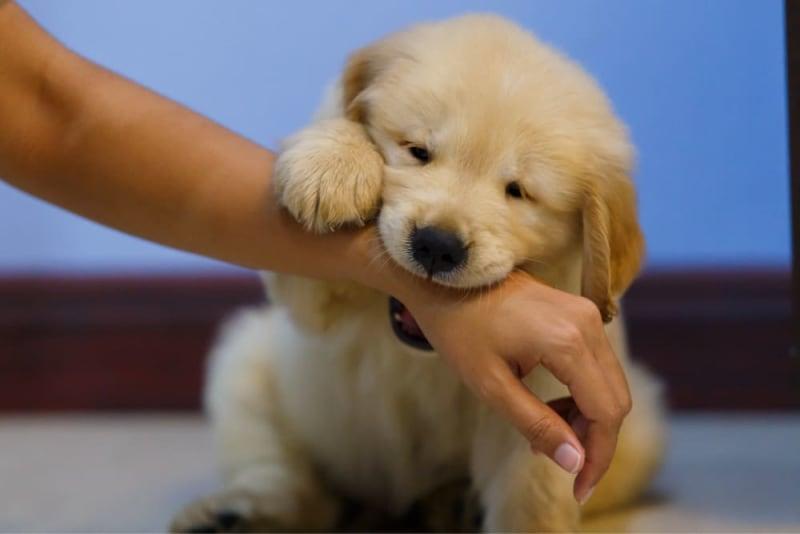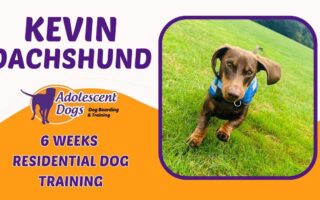Title: Understanding the Puppy Bite: A Journey from Playfulness to Training
When a puppy nibbles on your fingers or playfully tugs at your shoelaces, it can evoke a mixture of delight and surprise. Those tiny teeth, so sharp yet harmless, often embody the exuberant spirit of youth and curiosity. However, as any dog owner knows, this playful biting can quickly transform into an unwanted behavior that raises concerns about training and boundaries. In this article, we will explore the reasons behind your puppy’s biting behavior, the instinctual drives that fuel their playful nips, and effective strategies to guide them toward more appropriate ways to express their enthusiasm. Join us as we delve into the delightful world of puppy play and the steps you can take to create a harmonious relationship with your new furry friend.
Table of Contents
- Understanding the Root Causes of Puppy Biting Behavior
- Effective Strategies for Redirecting Your Puppy’s Natural Instincts
- Nurturing Positive Play: Techniques to Manage Biting
- Building a Lasting Bond: Training Tips for a Well-Behaved Companion
- Q&A
- The Way Forward
Understanding the Root Causes of Puppy Biting Behavior
Puppy biting is often a misunderstood behavior that can stem from various root causes. One primary reason is teething discomfort; as puppies grow, they go through a phase where their baby teeth fall out and adult teeth come in, causing irritation and a desire to chew on anything they can find. Additionally, playfulness is a natural part of a puppy’s development, where biting can be a way to engage their littermates and humans alike. When puppies are not given appropriate outlets for their energy, they may turn to biting as a form of play or exploration.
Moreover, fear or anxiety can trigger biting behavior in some puppies. If they feel threatened or overwhelmed, they may resort to biting as a defensive mechanism. It’s important to recognize the context in which biting occurs, such as during unfamiliar situations or encounters with other animals. Behavioral reinforcement, or the lack thereof, can also play a significant role; without proper training and socialization, puppies may not learn appropriate bite inhibition. Understanding these aspects can provide valuable insights into managing this behavior constructively.
Effective Strategies for Redirecting Your Puppy’s Natural Instincts
Redirecting your puppy’s natural instincts requires understanding their behavior and channeling it into constructive activities. Puppies often bite out of curiosity, teething, or a need for attention. To address this, consider introducing them to a variety of chew toys, which can satisfy their urge to chew while saving your hands and furniture from their curious little teeth. It’s essential to select toys that are durable and safe for puppies. Furthermore, engaging in interactive playtimes using fetch or tug-of-war can redirect their biting behavior into something more enjoyable and appropriate.
Establishing a consistent routine and training regimen is vital in managing your puppy’s instincts. Utilize positive reinforcement techniques, such as treats or verbal praise, every time your puppy chooses to play with their toys instead of your hands. Additionally, you can implement set command signals such as “leave it” or “no bite,” which help instill good habits. Here’s a quick comparison of some effective redirection strategies:
| Strategy | Description |
|---|---|
| Chew Toys | Provide a safe outlet for chewing. |
| Interactive Play | Engage in games that channel energy away from biting. |
| Training Commands | Teach commands to mitigate bad behavior. |
Nurturing Positive Play: Techniques to Manage Biting
Managing a puppy’s biting behavior can feel daunting, but it’s essential to approach this phase with understanding and positive reinforcement techniques. First, it’s crucial to acknowledge the behavior as a form of exploration and play. Puppies use their mouths to discover their environment, so redirecting that energy is key. Here are some effective strategies to consider:
- Provide chew toys: Offer a variety of textures and sizes to keep your puppy engaged.
- Use verbal cues: Teach commands like “gentle” to encourage soft play.
- Playtime routines: Ensure regular, structured playtime to use up excess energy.
- Positive reinforcement: Reward your puppy with treats and praise when they chew on appropriate items.
Additionally, maintaining a calm demeanor during biting incidents is vital. If your puppy bites too hard during play, yelp softly to mimic how another puppy would react. This helps them associate hard biting with negative feedback. Creating a consistent response to biting behavior can aid in learning limits. You might also find it helpful to set up a simple table of dos and don’ts for guidance:
| Dos | Don’ts |
|---|---|
| Redirect to toys | Encourage aggressive play |
| Use soft commands | Engage in roughhousing |
| Remain patient and consistent | Yell or react harshly |
Building a Lasting Bond: Training Tips for a Well-Behaved Companion
Establishing a strong connection with your puppy is crucial to curbing unwanted behaviors such as biting. One effective method is to engage consistently in positive reinforcement training. This approach entails rewarding desirable behaviors while redirecting the puppy’s attention when it attempts to nip. Here are some tips to foster better habits:
- Use toys as a distraction: Provide chewable toys during playtime to channel biting instincts.
- Implement “time-out” periods: If biting occurs, shift your attention away to help your puppy learn that biting leads to loss of interaction.
- Practice bite inhibition: Allow the puppy to mouth your hand gently, but immediately stop play and withdraw if it gets too rough.
Regular socialization is another vital component in developing a well-mannered companion. Introducing your puppy to a variety of environments, people, and other dogs can significantly improve its behavior. Create a socialization chart to keep track of your puppy’s experiences:
| Experience | Date | Reaction |
|---|---|---|
| Play with other puppies | MM/DD/YYYY | Curious and playful |
| Meeting new people | MM/DD/YYYY | Friendly and excited |
| Visiting a park | MM/DD/YYYY | Relaxed and observant |
Q&A
Q&A: Navigating the Adventure of Puppy Biting
Q1: Why is my puppy biting me?
A1: Ah, the classic conundrum of puppy ownership! Puppies are naturally inclined to explore the world with their mouths. Biting is a form of play for them, a way to interact with their siblings, and ultimately, a part of their teething process. Remember, in their eyes, you might just be another playful companion!
Q2: Is puppy biting normal behavior?
A2: Absolutely! While it may be surprising (and sometimes a bit painful), puppy biting is perfectly normal. They use their mouths to learn about their environment, and playfully nipping at you is their way of engaging. Think of it as their unique form of social interaction before they’ve mastered their bite inhibition.
Q3: When should I be concerned about my puppy’s biting?
A3: While some nipping is typical, excessive biting or aggressive behavior can be a red flag. If your puppy seems overly aggressive, doesn’t respond to commands, or if biting draws blood, it’s essential to seek guidance from a professional dog trainer or veterinarian to ensure there’s no underlying issue.
Q4: How can I manage my puppy’s biting?
A4: You have several tools at your disposal! When your puppy bites, let out a high-pitched “ouch” and withdraw your attention for a moment. This mimics how their siblings would react. Redirect them to an appropriate chew toy, ensuring they have ample items to gnaw on. Consistency is key—everyone in your household must respond the same way to reinforce boundaries.
Q5: Are there specific toys I should provide to discourage biting?
A5: Yes! Investing in sturdy chew toys sounds like a great plan. Look for options designed for teething puppies, like rubber toys or ropes. These not only relieve their urge to bite but also keep them entertained and away from your fingers and toes.
Q6: Can socialization help reduce biting?
A6: Definitely! Socializing your puppy—exposing them to other dogs and people—can be hugely beneficial. It teaches them how to interact appropriately and learn bite inhibition through play. Puppy classes can provide a great environment for them to learn these essential skills while also having fun.
Q7: How long can I expect the biting phase to last?
A7: While every puppy is different, most will begin to grow out of the intense biting phase as they mature. Typically, you can expect improvements within a few months, especially if you’ve been consistent with training and redirection. Patience and commitment are your best allies in this journey!
Q8: What if all else fails?
A8: If you’ve tried everything and biting persists or worsens, consulting a professional trainer may be the best course of action. They can provide tailored advice and techniques for managing your pup’s behavior and guide you on this exciting adventure of puppy parenthood.
Conclusion:
Puppy biting can certainly test your patience, but with understanding and consistent training, it’s a phase that can be overcome. Enjoy the journey—puppies grow up fast, and soon those little teeth will be more about kisses than nips!
The Way Forward
navigating the playful nibbles and enthusiastic bites of a puppy can be both a heartwarming and perplexing experience. While those sharp little teeth can certainly catch you off guard, understanding the reason behind this behavior is essential to training and creating a harmonious relationship with your furry friend. Remember, patience and consistency are key, as your puppy learns to convey affection without excess enthusiasm. With time, your puppy will transform into a well-mannered companion, leaving behind those sharp bites for gentle kisses. So take a deep breath, embrace the chaos of puppyhood, and know that each playful nip is a step toward a stronger bond with your beloved pet. Happy training!



